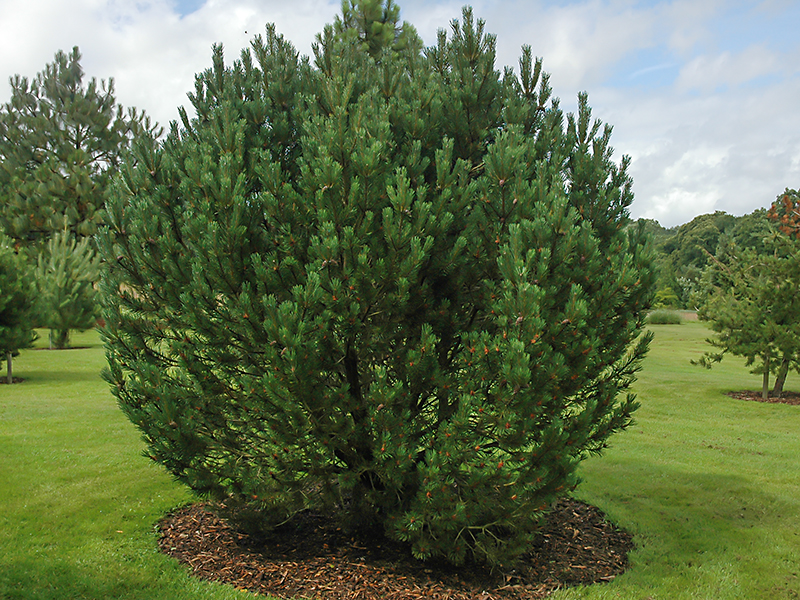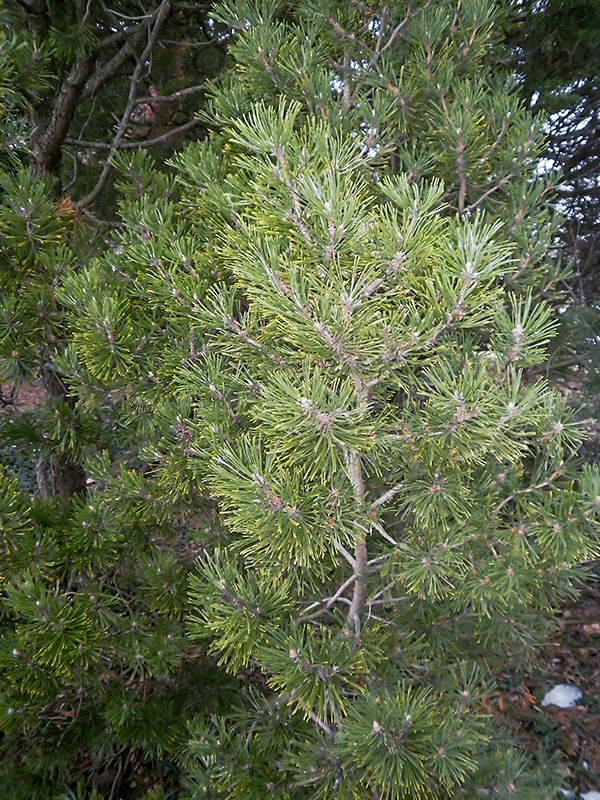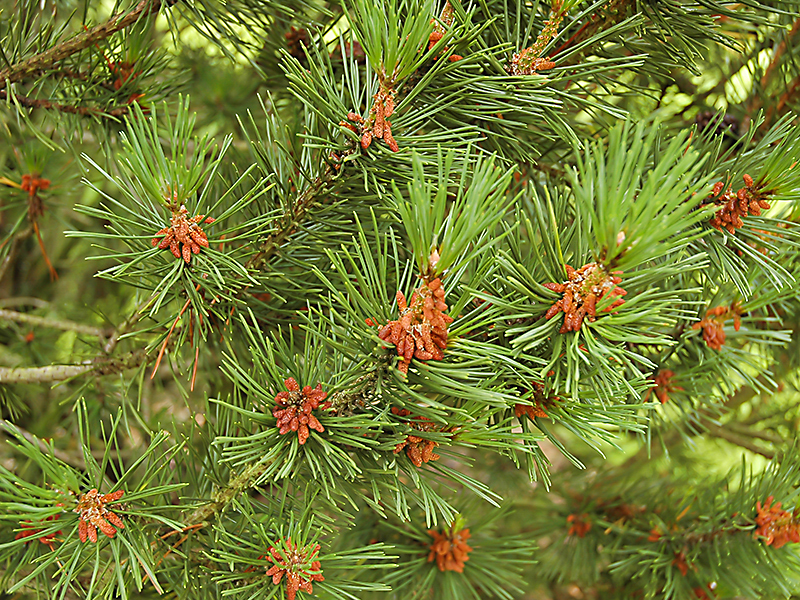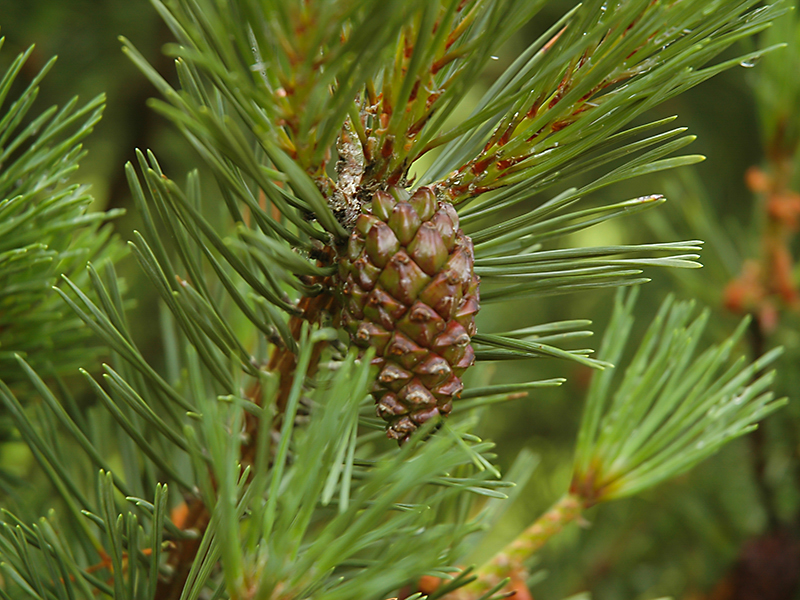
Woody > Pinus > Pinus mugo > Pinus mugo subsp. uncinata
Pinus mugo
ssp. uncinata
Uncinata Mugo Pine
Origin: Is native to Eastern Spain at fairly high altitudes in the Pyreneen Mountains. Also native in Central and South East Europe, ranging between the Swiss-Austrian border in the Alps, to the Erzgebirge, Tatar and Carpathian Mountains. The isolated central French population was introduced in the 19th century and has been widely planted through the Mediterranean and North Europe reforestation programs.
Mike's
Opinion


"
It is not used in the landscape often due to its large size and wide spread. It can be used to protect against soil erosion and is especially used to help stabilize sandy soils along the coast lines. Native to Eastern Spain at fairly high altitudes and is overall a notable specimen.
Michael Pascoe, NDP., ODH., CLT., MSc. (Plant Conservation)
"
| Family |
| Pinaceae |
| Genus |
| Pinus |
| Species |
| mugo |
| Category |
| Woody |
| Type |
| Tree (evergreen) |
| Subspecies |
| uncinata |
| Pronunciation |
| USDA Hardiness Zone |
| 5 |
| Canadian Hardiness Zone |
| 4a - 6a |
| RHS Hardiness Zone |
| H7 |
| Temperature (°C) |
| -29 -(-23) |
| Temperature (°F) |
| -20 - 10 |
| Height |
| 12 - 20 m |
| Spread |
| 7 - 8 m |
Photographs
Description and Growing Information
Flowering Period
| General Description |
| A high altitude species occurring mostly 1000 - 2300 m. Occasionally grows as low of an altitude as 200 m in the frost hollows and peat bog habitats in the North East range. The closer to its upper limit it grows, a slight change happens with its height getting lower and it becoming more prostrate in growth. Quiet tall, with a straight erect trunk. Variable in size. Single steamed and pyramidal in shape. Is larger than the other species of Pinus mugo. Covered in dark green needles and dark brown cones. |
| Landscape |
| Is not used often in the landscape due to its size. Can be used to protect against soil erosion and is especially used to help stabilize sandy soils along coast lines. Some areas use this tree in commercial forestry production to make wood-chips. Sometimes used as an ornamental. |
| Cultivation |
| The best time to prune is in the spring, when new growth emerges. Prune the candles to promote bushiness or to limit the plant size. Lower limbs will die naturally. When this happens, prune them off along with any unwanted limbs to accent its branching pattern. Has little tolerance to air pollution; the pollution causes abnormal needle drop and poor growth in the tree. Prefers deep moist loam soil, full sun to partial shade and needs minimal amounts of water. This tree is naturally wind pollinated. |
| Shape |
| Recurved pyramidal form. |
| Growth |
| Medium |
| ID Characteristic |
| Quite tall, with a straight erect trunk; single steamed and pyramidal in shape. Cones are subterminal in groups of 1–3 and are ovate in shape. Needles are made up of two needles per fascicle and are bowed and twisted. |
| Pests |
| Some pests may include Pine Weevil and Pine Needle Scale. Crawlers are active when Syringa vulgaris is in bloom in late May. Treat this pest immediately and follow up with another treatment 10 days later. |
| Habitat |
| Native to the Mountains of Spain and Europe. |
| Bark/Stem Description |
| The bark splits into irregular shaped plates. This can make the bark quite scaly or plated. Bark varies from grey to brown. |
| Flower/Leaf Bud Description |
| The buds are acute and cylindrical. They are very resinous and are 6–9 mm in size. Buds tend to be red–brown in colour. |
| Leaf Description |
| Bares short green needles that are made up of two per fascicle. Needles are bowed and twisted. Needles vary in colour depending on the stage of life they are in. Young shoots are light green, which eventually turn to dark green and sometimes even dark brown with maturity. Needles are approximately 23 – 75 mm in length. The shoots are glabrous, greyish black and sit between the decurent scale needles. |
| Flower Description |
| Flowering begins to occur when the plant is around 3 - 5 years in age. The male flowers are born separate from the female flowers. Flowers are a reddish-brown colour with a greenish-yellow filament. |
| Fruit Description |
| Male cones are 10 mm in size, red or yellow in colour and pollen shed from May to July. Female cones are purple until they begin to ripen, at that time they become a shiny dark brown colour. The female cones ripen in late September. The cones are fairly symmetrical, quite oblique and can vary in size. The cones have thick scales on the upper side and thin scales on the lower side where they also tend to be glossier. The cones are arranged in multiple groups of 1 – 3. |
| Colour Description |
| Reddish brown flowers; needles vary from light green to dark green-brown with age, and the bark is a grey-brown. Male cones are yellow or red and female cones are purple or shiny dark brown. The buds are a red-brown colour. |
| Texture Description |
| Overall, a medium textured tree. |
| Notable Specimens |
| Niagara Parks Botanical Gardens, Niagara Falls, Ontario, Canada. The A.M. Cuddy Gardens, Strathroy, Ontario, Canada. |
| Propagation |
| Cuttings work, but can be difficult to do. Since each cone produces 50–70 mature seeds, rate of germination is high. Seeds will germinate in 30–60 days even under good conditions. Germination can be erratic and the seeds usually only germinate with good lighting, so it is important to surface sow on a well-drained seed sowing mix with a temperature around 15 °C. The seeds need to be over wintered before they will germinate. Seed production occurs in the tree around the age of 3 - 5 years. |





